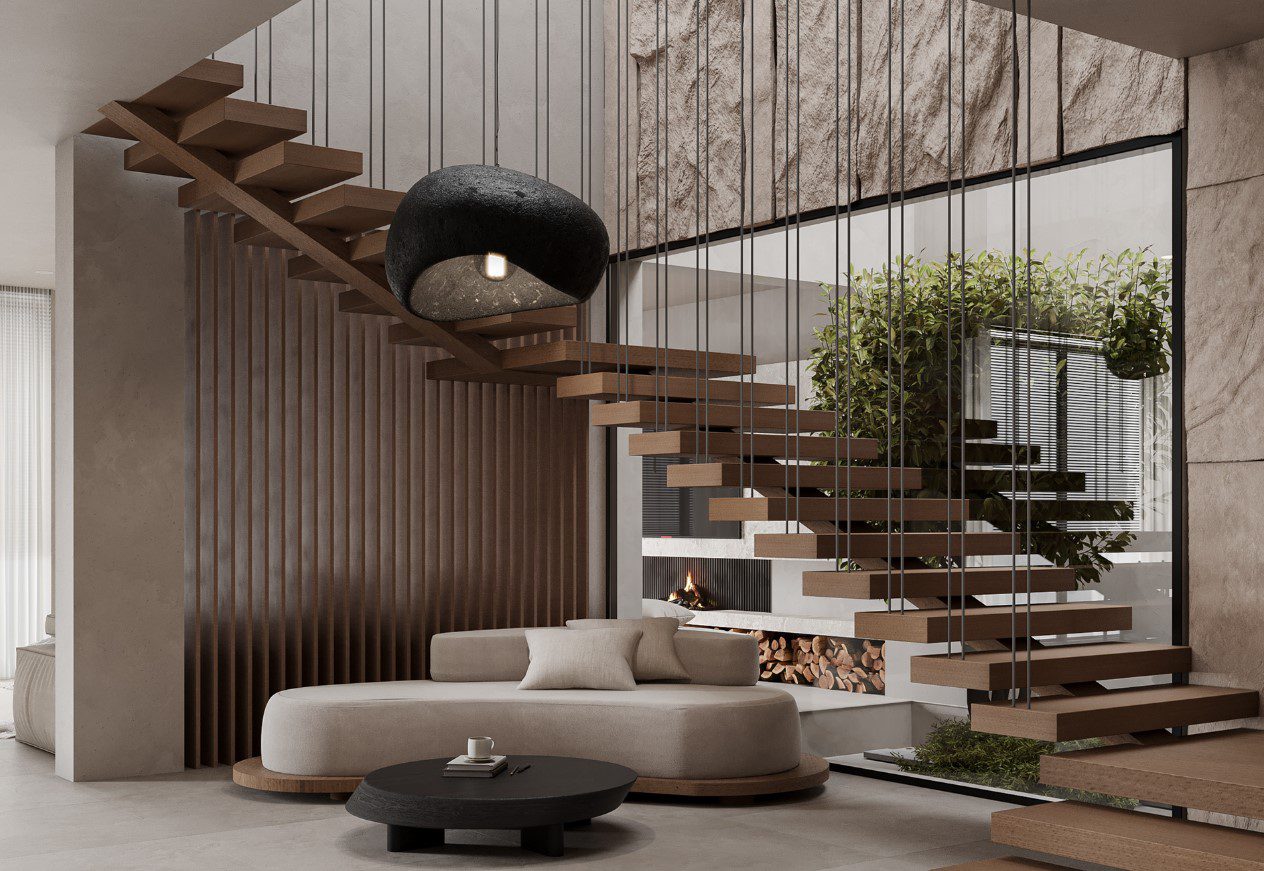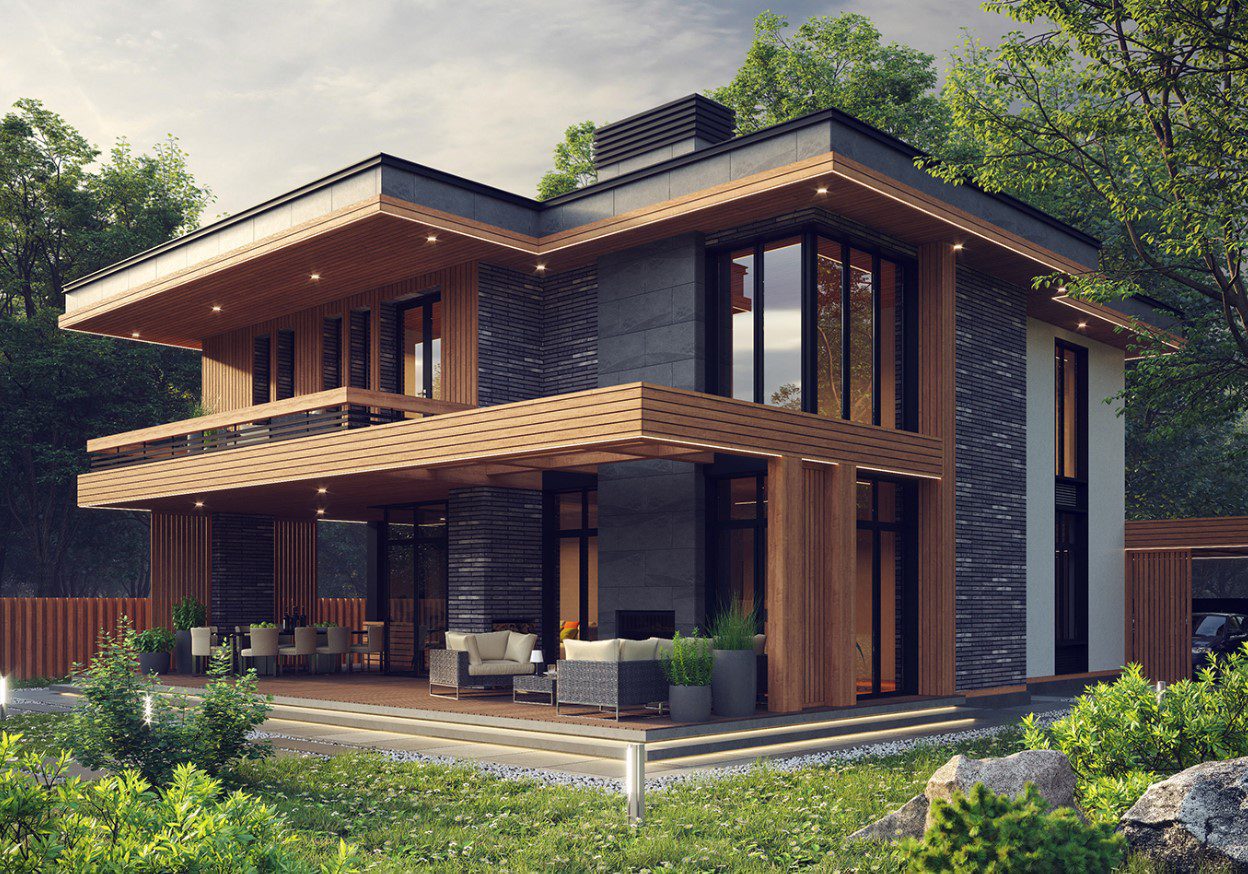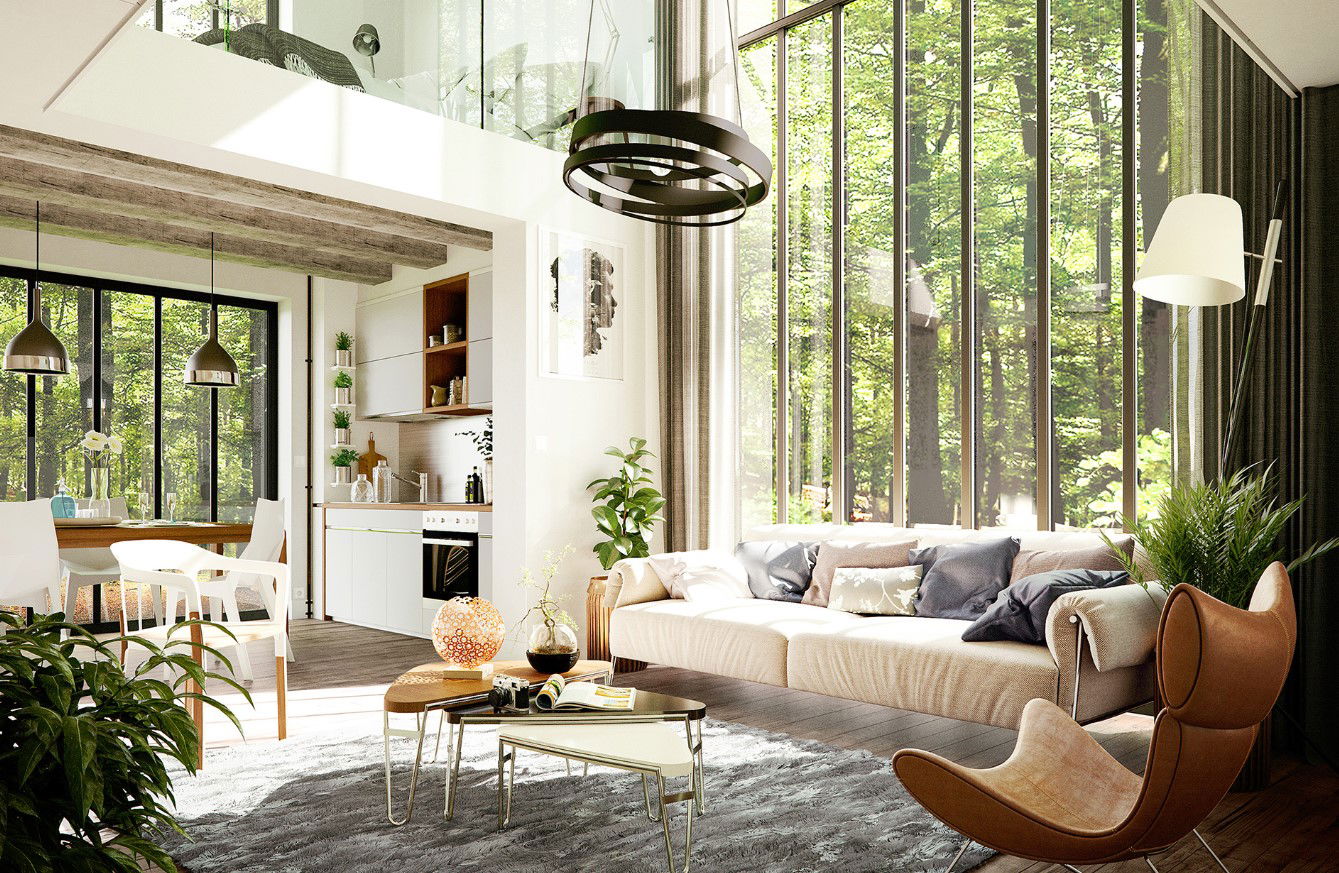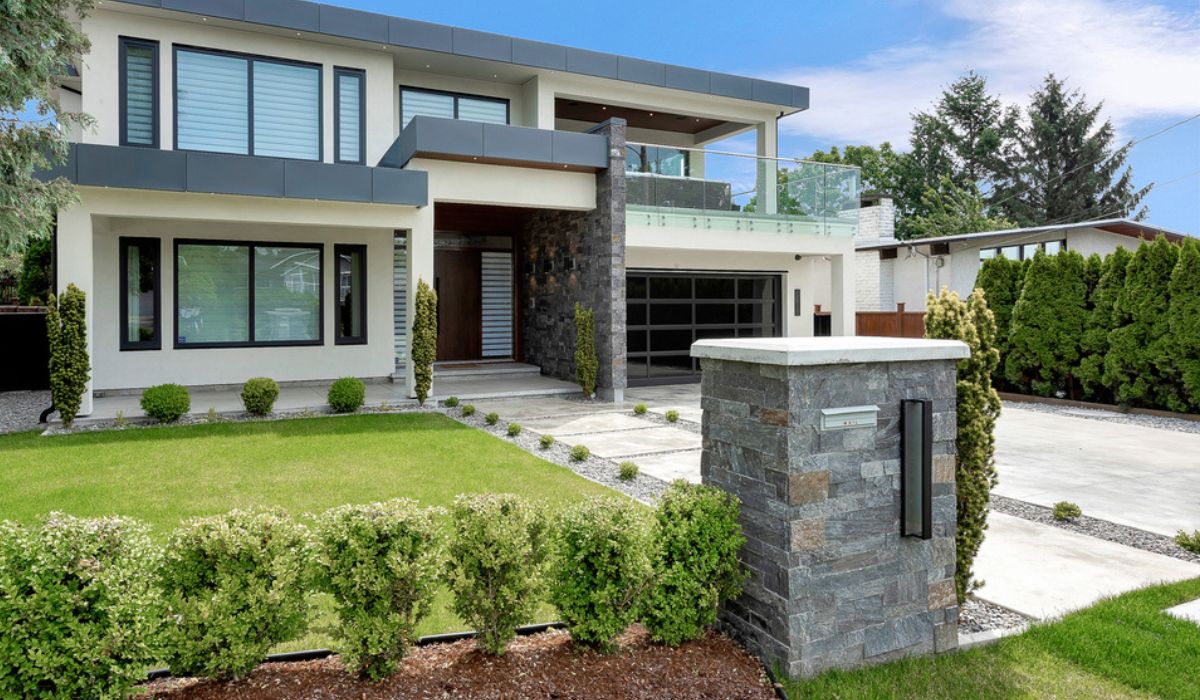The phrases “contemporary” and “modern” are fundamentally related to one another. We cannot unsee one while dealing with the other. They’re usually misunderstood or considered the same. However, there are certain clear distinctions that help you tell them apart. In this article, we’ll examine the two words’ distinctions and how they relate to various types of house plans.
Contemporary house design: How is it different from modern house design?
Often, the words ‘modern’ and contemporary are used interchangeably. However, these two terms have a fine distinction when it comes to describing house designs. Modern house design describes the designs of the early to mid-nineteenth century, which focused on functionality and simplicity. Modern house designs are inspired from Scandinavian designs and German Bauhaus that favour neutral colours, functionality and straight lines. These designs are also deeply influenced by the 1920s art deco, which flaunt metals, use of bold colours, geometric shapes, and luxurious fabrics. In contrast, contemporary designs refer to future-inspired designs that are inspired by a variety of styles, both modern and traditional. Notably, both modern and contemporary house designs share an affinity for natural materials, clean lines, and tasteful minimalism.
know about: wooden house design
Modern house design: Characteristics

Source: Pinterest
Modern architecture prioritises function over aesthetics in a minimalist style. Their rectangular shapes, lack of ornamentation, and whitewashed exteriors make them easily identifiable. A lot of modern residences were also constructed with the surrounding environment in mind.
Some important factors that you need to take care of while designing your dream modern house are:
Arranged shapes

Source: Pinterest
Place the furniture so that the balance of vertical and horizontal clean lines is achieved. An elegant and rich design will be produced by the deliberate interplay of lines and geometric shapes.
Not being embellished

Source: Pinterest
Ornate design elements like arches, embellishments and extraneous elements are typically avoided in modern home architecture. Modern house design places emphasis on the overall space’s lines and contours with simple, clean elements and little decoration.
Low, horizontal structure

Source: Pinterest
Homes used to be able to spread across large lots and embrace natural features back when the property was still inexpensive. In order to effectively frame exterior views, home designers frequently collaborated closely with landscape architects. Low-roof designs reflected the terrain’s slope and other external elements.
Asymmetry-related components

Source: Pinterest
Select furniture with slender bases and exposed legs. This will add effortless aesthetics to the area and improve the home’s overall current appearance by giving an ambiguous yet attractive view.
Open-concept design

Source: Pinterest
One of the fundamental elements of contemporary home design is the open floor plan. Modern home designs advocate the establishment of an open multipurpose space like a family room as a social living area rather than dividing it into distinct parts with walls.
Huge glass windows

Source: Pinterest
Large windows, skylights, or glass walls will further enhance the modern appearance by bringing natural light into your home. Additionally, the huge windows will offer views of the outside to link the home with its surroundings.
Exteriors with a whitewash

Source: Pinterest
White, black, grey and the natural earth tones of the materials used in the area are neutral colours that will enhance and enhance the visual appeal of the house. So that it compliments the other elements, it is always advised to give the exterior of the house a very light and reflective tone.
Contemporary house design: Characteristics

Source: Pinterest
Contemporary architecture, in contrast to modern architecture, is not tied to a specific era. That is, modern homes mirror current architectural trends; what is modern today might not be modern in the upcoming years. However, the style of this kind of architecture is fluid, combining both traditional and modern design features.
Contemporary houses include:
Blending of various styles

Source: Pinterest
While clutter is not a significant part of contemporary home design, balanced, well-planned décor pieces have their place.
Both curves and angles

Source: Pinterest
Curves and angles, which are essential elements of contemporary architecture, are incredibly difficult to execute, but they are beneficial since they draw attention to the design of the home and call for the appropriate hue, which can be found on a palette.
Unstructured composition

Source: Pinterest
Contemporary houses frequently feature a simple, uncluttered style. Unique materials can be employed; however, outside detailing, moulding, and decorative trim are typically minimal.
Asymmetry-related components

Source: Pinterest
Contemporary architecture is creative and unusual by definition. As a result, it frequently uses unusual building materials. Depending on how it’s done and how the space is furnished, this minimalism can provide warmth or chill.
Open-concept design

Source: Pinterest
A sense of cohesion between spaces in a building is produced through open floor designs. They allow more natural light in and make a room appear bigger. Additionally, because of their adaptability, your area can become anything you desire.
Modern house plans are well-liked for their roomy interiors, open floor plans, cutting-edge construction materials, enormous glass expanses, and straight, unadorned masses.
Key elements of contemporary house design
The four key elements of a contemporary house design are as follows:
Craftsmanship
The most important element of any contemporary house design is the attention to craftsmanship. This style of home design extends an appreciation for quality artisan and materials.
Open floor plan
Contemporary house designs are characterised by open space, which emphasise lines, lighting, and simplicity. For example, most contemporary houses come with an open kitchen and dining area instead of an enclosed formal dining room.
Minimalism
Simplicity and minimalism are the major highlights of contemporary house design. These designs avoid bold prints and prefer timeless simplicity, attention to detail, and round, clean lines.
Space
Contemporary house designs focus on a building’s architectural elements rather than the home decor items within. It aims to transform the entire space into a form of home decor, enhancing aesthetic appeal through simplicity.
How to create a contemporary house design?
For creating a contemporary house design, here are some ideas you can use:
Eliminate clutter
Contemporary house designs are based on minimalism, involving contemporary furniture pieces and clean lines that are free of all clutter. A cluttered space can feel smaller than it really is, which opposes the sense of openness intended by most contemporary house designs. Declutter your home as much as you can by removing everything that doesn’t perfectly fit the style you wish to achieve.
Include natural materials
Use natural materials like stone, wood, jute, and metals throughout your home including floors, walls, and furniture to create texture. For instance, an exposed brick wall coupled with a jute rug can create a warm, cosy vibe. When it comes to upholstery, lean more towards leather or linen for the best effect.
Choose lighting carefully
In contemporary house designs, lighting choices have to be made very carefully. These choices include maximising the size of windows and choosing suitable light fixtures, like lamps and track lighting. Make sure that the light fixtures you choose are high quality but not pretentious. For instance, you can opt for a stainless-steel chandelier or pendant light instead of a traditional floor lamp.
Incorporate accent colours
Usually, contemporary house designs prefer a neutral colour palette consisting of creams, greys, whites, and taupes with pops of pastel or bold colours in accent pieces like lamps, wall art, and throw pillows. Many people choose to add a splash of accent colours via a bold piece of artwork or statement area rug.
Contemporary house design: How to maximise natural light?
Lighting is an essential part of all contemporary house designs. Whether you are building a new house or redoing an existing one, one of the best things you can do is maximise natural lighting. This can be primarily done through windows and skylights. There are many steps you can take to maximise natural lighting in a contemporary house.
- Window treatments can go a long way in boosting the amount of natural light that filters into your home. Opt for neutral or sheer shades , curtains, and blinds. Keep them open during the day to let in the sunlight.
- Install skylights, particularly in spaces like long hallways or at the top of the stairwell. Integrating skylights into your house can be another great way of maximising natural light.
- Furthermore, when building a new house, make sure that the size of your windows is as large as it can be. This also positively affects the amount of natural light that penetrates your space.
FAQs
What design features do contemporary homes have?
Clean lines and geometric shapes are highlighted in contemporary house design.
Is a contemporary home pricey?
The price to build a modern home varies based on where it is, how much labour costs where you live, what kind of materials you choose, and how many square feet you want.
What characteristics distinguish a modern space?
A monochromatic colour scheme, clean lines, minimalism, natural materials, and natural light are characteristics of modern and contemporary interior design.
Housing News Desk is the news desk of leading online real estate portal, Housing.com. Housing News Desk focuses on a variety of topics such as real estate laws, taxes, current news, property trends, home loans, rentals, décor, green homes, home improvement, etc. The main objective of the news desk, is to cover the real estate sector from the perspective of providing information that is useful to the end-user.
Facebook: https://www.facebook.com/housing.com/
Twitter: https://twitter.com/Housing
Email: [email protected]











